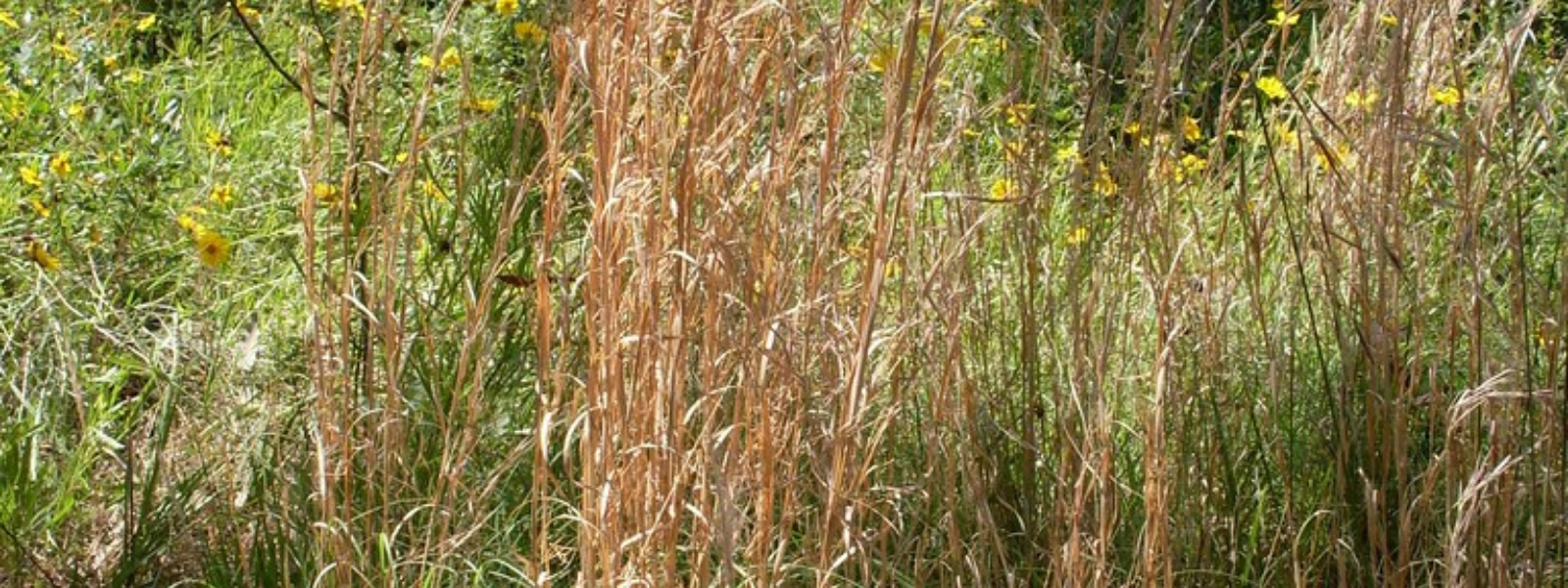
Common Name
Whisky grass, Andropogon, Beard grass, Broom sedge, Bluestem, Whiskey grass, Yellow bluestem
Scientific Name
Andropogon spp.
Family
Poaceae
Lifecycle
Perennial
Seasons of Growth
Year-round
Key Distinguishing Feature
Grass with aromatic leaves, often used for thatching
Growth Form: Whiskey Grass is a bunchgrass with a tufted growth habit, meaning it forms clumps or tussocks of grass.
Leaves: The leaves are long, narrow, and typically rolled or folded. They are usually green or bluish-green in colour.
Flowers: The inflorescence of Whiskey Grass consists of spikelets borne on slender stems. These spikelets contain the grass's flowers and seeds.
Seed Heads: The seed heads are typically bristly or brush-like in appearance, with long awns (bristle-like appendages) attached to the seeds. The awns give the grass a distinctive look.
Roots: Whiskey Grass develops a fibrous root system that helps anchor it in the soil.
Ecological Impact:
Whiskey Grass can become invasive when it takes over pastures or native grasslands.
Control Methods:
Controlling Whiskey Grass typically involves a combination of mechanical, cultural, and chemical control methods.
1. Mechanical Control:
- Mowing or Slashing: Regular mowing or slashing can help reduce the height and seed production of Whiskey Grass. Frequent cutting before it sets seed can weaken the plants over time.
- Grazing: Controlled grazing by livestock, such as cattle or sheep, can help manage Whiskey Grass populations. Proper grazing management can limit its dominance.
2. Chemical Control:
- Herbicides: In cases of severe or persistent infestations, selective herbicides designed for grass control may be used. Always follow the manufacturer's instructions and safety guidelines when using herbicides.
3. Seed Management:
- Monitor and Control Seedlings: Regularly inspect the area for new Whiskey Grass seedlings and remove them promptly.
4. Integrated Weed Management (IWM):
- Implement an integrated approach that combines multiple control methods to maximize effectiveness and minimize the risk of herbicide resistance.
For specific guidance on controlling Whisky Grass in water bodies within your region, it is recommended to consult with local authorities or our weed management experts who are knowledgeable about the unique conditions and regulations your area.




